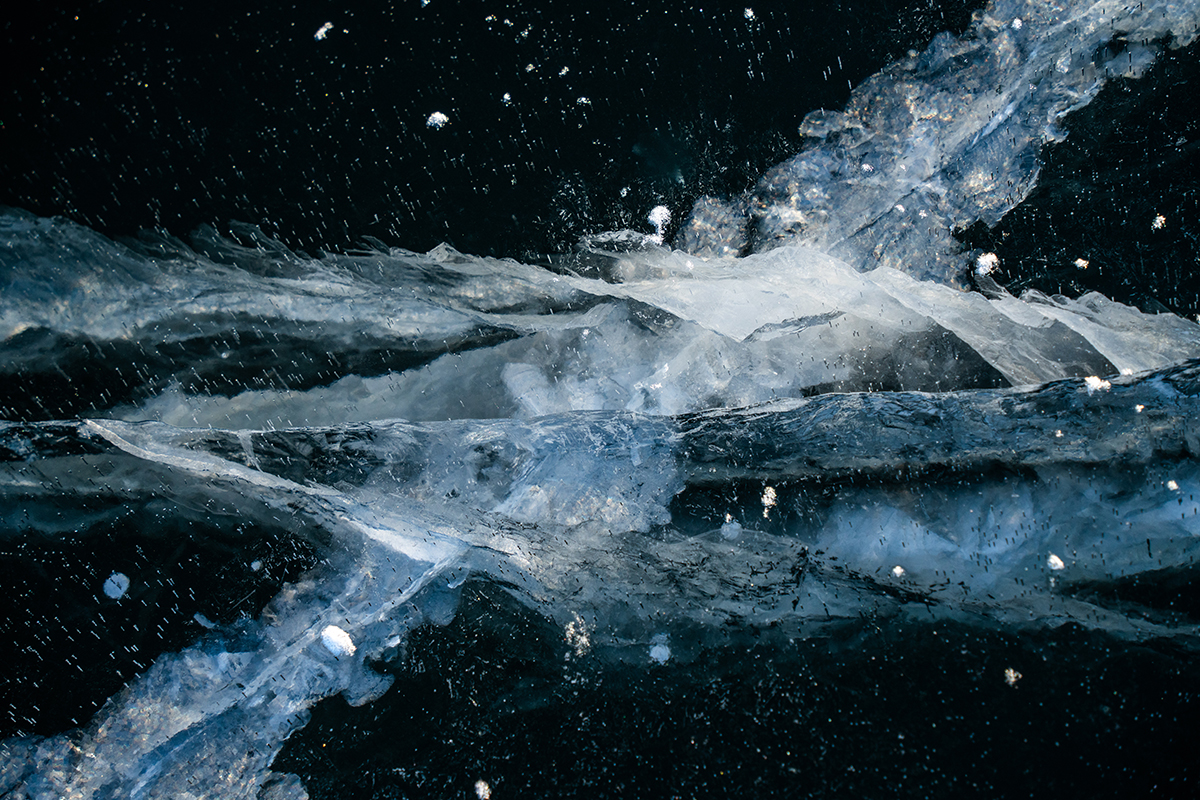How to: Photograph Ice Abstracts
André Costantini uses his Tamron 28-200mm Di III RXD all-in-one zoom to create macro-style winter magic.
Share the article:
More Photo Tips | Video Gallery | Photo Gallery | Enewsletter sign-up
By Jenn Gidman
Images by André Costantini
Each year, at the beginning of the winter season, André Costantini bundles up and heads out from his Vermont home with camera in hand, ready to capture close-ups of the intricate patterns, textures, and reflections of the ice on nearby Lake Champlain.

28-200mm (200mm), F/6.3, 1/250 sec., ISO 640
Click image to view larger
“There’s only a very limited window where the conditions I’m looking for are present, so I can take these types of photos,” he says. “I’m not sure of the science behind it, but there’s a certain period after the water freezes when it warms up again for a bit, then refreezes, so you get this stunning clarity with these black backgrounds and the bubbles trapped underneath. It makes for fascinating images, but it usually only lasts two or three days.”
To capture his icy abstracts, André breaks out his Tamron 28-200mm F/2.8-5.6 Di III RXD all-in-one zoom. “With a Minimum Object Distance (MOD) of 7.5 inches at the 28mm end and 31.5 inches at the telephoto end, the 28-200’s close-up shooting abilities allow me to transform the frozen lake waters into pieces of art,” he says. “Having the longer focal length with these macro-style capabilities is what I think makes these images work. Plus, the 28-200’s moisture-resistant construction gives me confidence that the lens will be protected against the snowy, wintry conditions I often find myself shooting in.”
André doesn’t have to wander too far from shore to capture his photos, but even when he does, he stands on top of ice that’s definitely thick—meaning he isn’t concerned that his picture-taking efforts will be marred with a surprise plunge. “I see people ice-fishing out in the middle of the lake, much further from the shoreline than where I am,” he says. “I can take my photos with peace of mind that I’m safe, which allows me to just enjoy the ice.”
ANDRÉ’S QUICK TIPS
• Shoot at the beginning of the winter.
I photographed the ice images you see here in December and January—basically when the lake first froze. Over time, as we get deeper into the season, the ice usually gets thicker. That means it gets more cloudy, and so you won’t have that sort of clarity in your photographs.
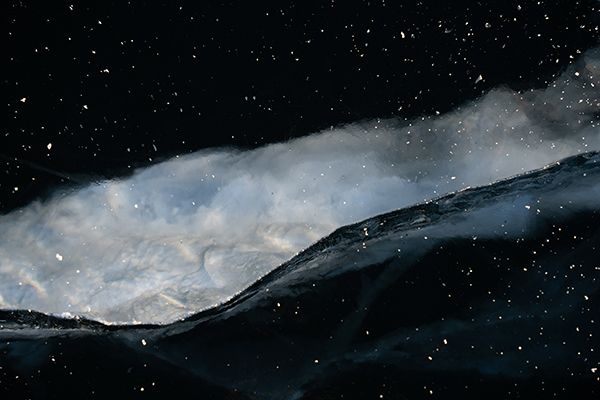
28-200mm (166mm), F/6.3, 1/500 sec., ISO 640
Click image to view larger
• Be open to what you’re seeing.
Stay observant to what’s in front of your camera—you’ll find a world of things you didn’t know existed. The whole idea of close-up photography is to explore subjects from different perspectives. You want to show your viewers something they don’t see all the time. For instance, it’s interesting to me how many of these images almost mimic landscapes. I’m able to isolate these little moments with my camera and 28-200mm lens that I probably wouldn’t have seen with my naked eye.

28-200mm (200mm), F/5.6, 1/100 sec., ISO 125
Click image to view larger
• Change your position often.
I was usually pretty low to the ice for most of these images, but at all different angles. The reason there’s so much contrast in the images is due to the late-day sun coming in at an angle and illuminating it. So, with that in mind, taking just a step to the left or to the right could dramatically change the scene in front of your camera, based on how the light is hitting the ice.

28-200mm (107mm), F/5.6, 1/500 sec., ISO 640
Click image to view larger
• Focus on a part of the scene that makes the most sense.
When you’re shooting ice from an angle, the focus can get thrown off a bit, so it helps to select one particular part of the scene to concentrate on, so you have that part super-sharp and the rest nicely falling off. I shot most of these at F/5.6 or F/6.3 to achieve a depth-of-field that lets me do that, so I can draw the eye to those mini-landscapes I mentioned earlier. You want to guide people to see what you’re seeing through your composition.
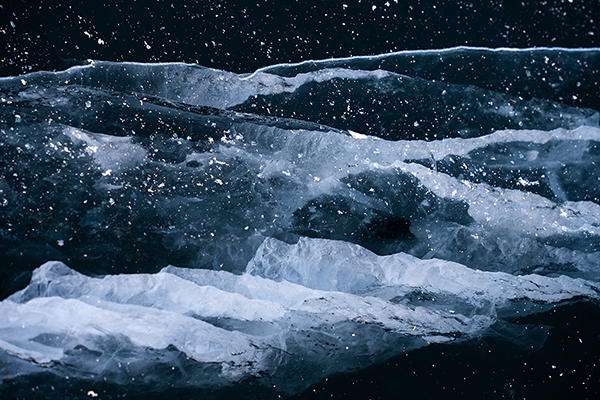
28-200mm (124mm), F/6.3, 1/160 sec., ISO 640
Click image to view larger
• Keep a lookout for color.
Winter landscapes often tend to be drab and grey, which is why you’ll often see photos of such landscapes in black and white. But with ice, you’ll sometimes spot a bluish tint. Black-and-white photos are great, but there’s something eye-catching about that monochromatic blue in an ice photo. It gives the image a little more of a mood that wouldn’t exist without that bit of color.
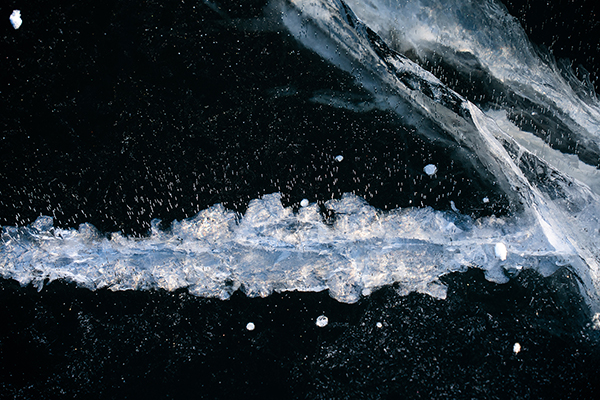
28-200mm (100mm), F/5.6, 1/250 sec., ISO 640
Click image to view larger
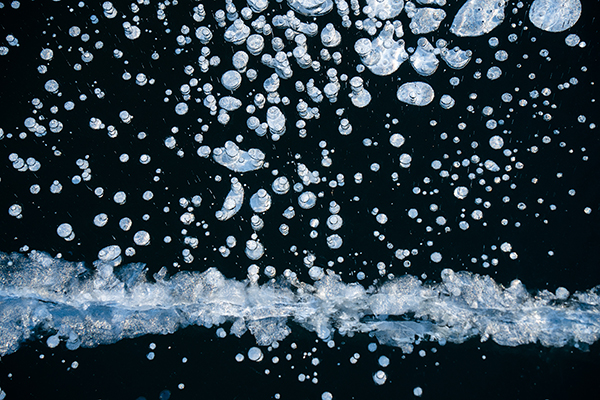
28-200mm (68mm), F/5.6, 1/250 sec., ISO 640
Click image to view larger
To see more of André Costantini’s work, check out his website.
More Photo Tips | Watch Videos | Learn More About Tamron Lenses | Photo Gallery
